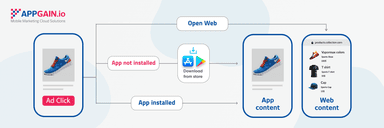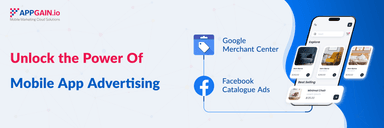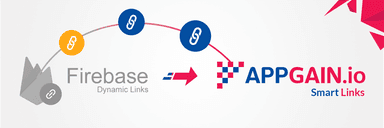Mobile apps are not a “set-and-forget” thing, you don’t just create it, and that’s it! Building the app is your start line; it’s when you start the game.
The real case here is to go through all the challenges you face until you reach the finish line successfully, and then go to the next level, so on and so forth.
Accordingly, we are providing you with what you need to win this mobile app marketing challenging game; “Appgain.io step-by-step guidelines in Mobile App Marketing and how to acquire, engage, and retain app users.”
Throughout this guide you are going to learn more about mobile app user journey, how you can trigger them in each phase of this journey, and how to successfully pass each phase till you reach the triumph!
Step 1: Know more about the game
Before taking any step forward in the game, you need to study its related facts and figures first. So here we go. Researchers found that “Four out of five smartphone users check their phones within 15 minutes of waking up, and 44% admit to sleeping with their phones beside their bed.” Huge huh? And the ugly truth is that users don’t even spend this time equally between different apps. A mobile app user has an average of 26 apps, but s/he uses only 5 of them for 80% of the time!
These insights will tell you more about that:
- an insight on app categories share and average time spent in each

- While you have a robust top 10 apps of all times
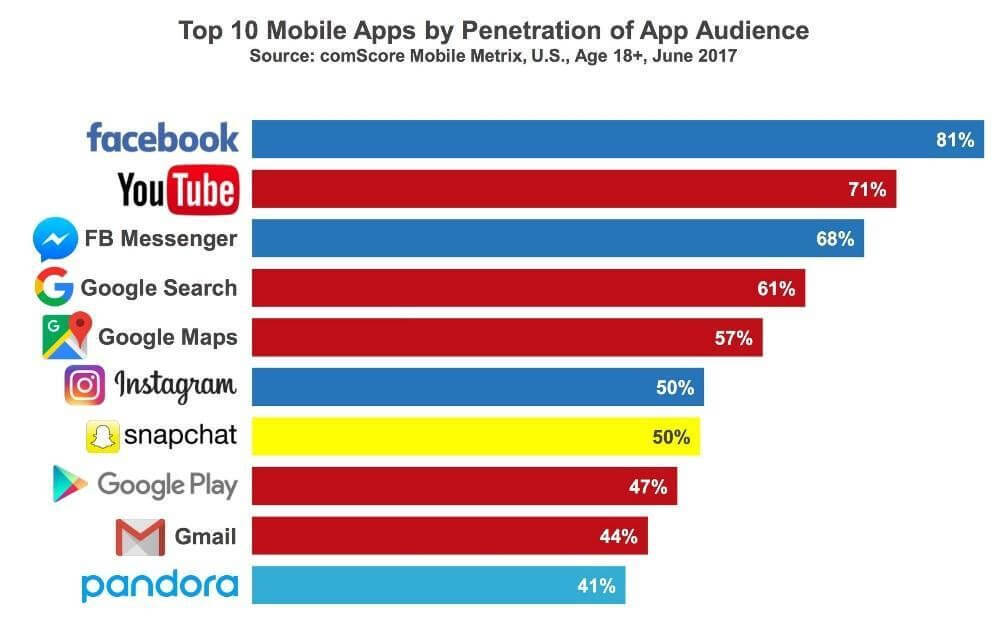
- When you try to introduce a new app, these are your chances.

- But knowing what your users expected will help a million.
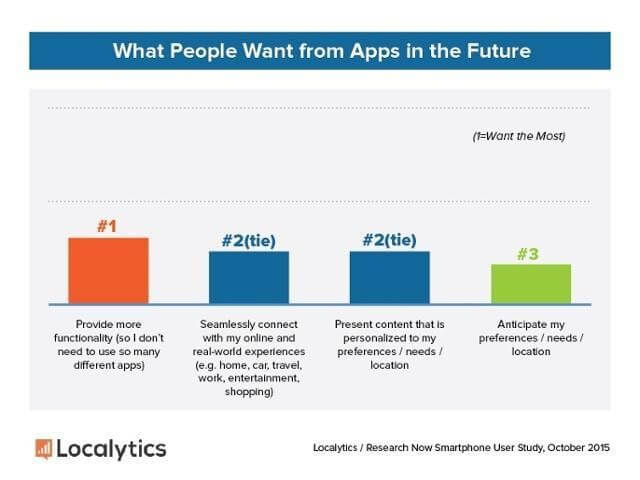
using these facts and figures, you can now map most of the challenges you may face and get prepared.
Time to learn how to win them all!
Moving to step No.2
Step 2: Understand your user journey
To win users’ attention and to stand out despite all of the above challenges, you need to know your users’ lifecycle starting from the minute they hold their digital device and start navigating…
The growth framework “AARRR” is your best enlightenment model for that aspect. Invented by Dave McClure back in 2007, AARRR was and still that simple and clear way which well-illustrated how exactly your users move from a phase to another and get you one step closer to the understanding of their behavior. AARRR states that mobile app users go through 5 stages; acquisition, activation, retention, revenue, and referral, as shown in the diagram:
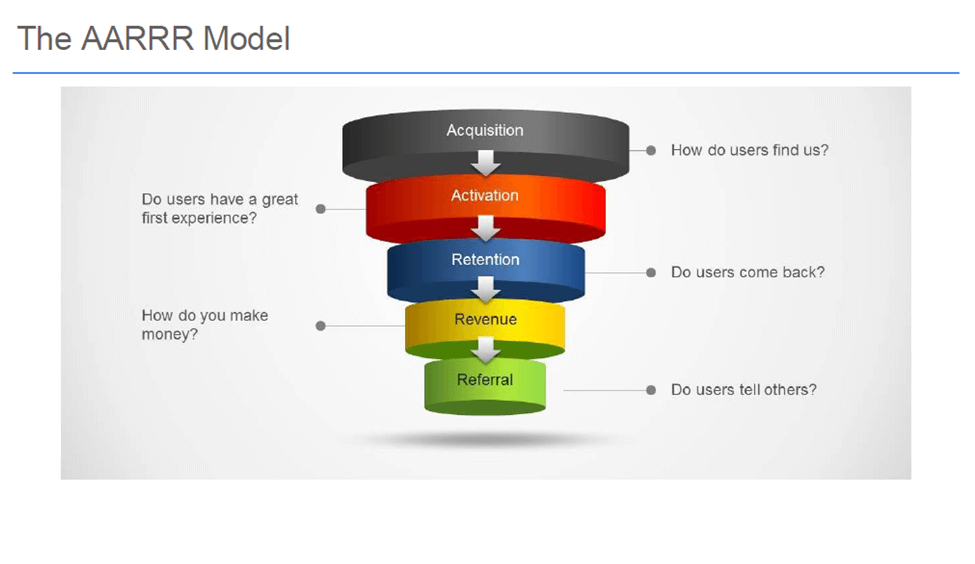 Your task now is to master every single stage of these; to understand how to encounter each one, to know the best strategies to be used, and to discover the suitable tools to analyze and manage your plan… Let’s dig deeper!
Your task now is to master every single stage of these; to understand how to encounter each one, to know the best strategies to be used, and to discover the suitable tools to analyze and manage your plan… Let’s dig deeper!
Step 3: Utilizing the AARRR Model in your mobile app marketing plan
I- Acquisition
How do users find your app? (your app discovery)
Having more than 1.2 million apps in app stores, your mobile app acquisition process is not such an easy task to accomplish. After double-checking on your users’ persona and segmentation, and making sure that you are targeting the exact right audience to your app, you need to start researching where exactly to hunt these audiences. And the question here is “From where can you start?” The answer is right in this insight
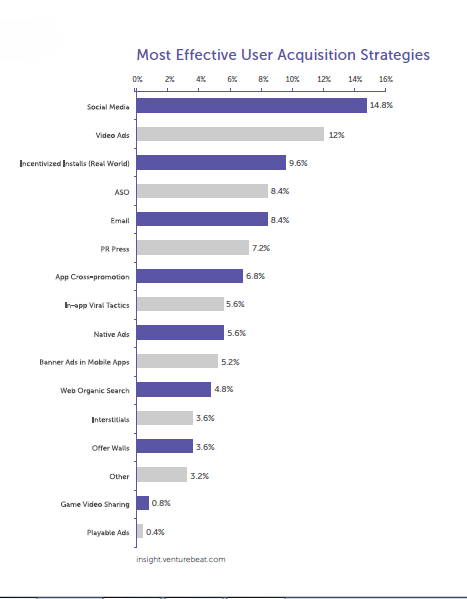
These are the most effective mobile users’ acquisition strategies and channels. After thoroughly checking it, you need to do the following:
- Determine which channels of these you are using the most
- Determine how common/successful it is according to the graph
- Check out your app acquisition insights (aka mobile attribution) from each channel and document all the findings
- Compare between the insights of each channel you analyze and determine which ones work for you the most
After doing this exercise, you will definitely find out that the most effective channels/strategies on your list is one of these: social media, video ads and ASO. These three are the top channels to acquire audience, but do we know how to approach them correctly? Let’s see…
1- Social Media
Social Media is ranked No.1 channel on the “most effective channels” list for a reason; it’s a magical channel if you just used it right! The evolution of social media throughout the years is impressive. Nowadays it is marketers’ no.1 channel to reach and acquire the largest possible base of audiences, and to network with them as well!
So here are you some Do and Don’ts when you start setting your social media strategies:
The Dos
- Create a worth spreading app content: Wants your mobile app go viral? Then listen to this. The fastest and most effective way to spread your latest news/updates about your app is to get people to share it. The easiest way for people to share these news/updates is to find them right there on their timeline. So create that shareable and engaging app content and let your audiences do the rest! It can be a written post, a GIF, or a video
- Interact: think of social media platforms as your online PR. Reply to your audience’s comment or engage them through a game that is related to your app, and most importantly, act like a human being, not like a robot! Collaborate with influencers: Social media influencers are talking marketing by storm, forget the old school strategy of focusing all your budget on paid ads, save some to the right influencer who is in the same field as your app and collaborate to advertise for your mobile app.
- Hashtags: watch the most used hashtags closely on each platform you are using post regularly on those platforms. Choose what is suitable for you and use them wisely.
As for the Don’ts, this chart says it all.

Here are you some tools that can assist you:
Socedo: “Automate Social Media Lead Generation Machine”
Hashtagify: “Find and Analyze Top hashtags.”
Hootsuite: “Manage Multiple Networks and Measure your campaign results.”
Edgar: “Social Media Scheduling Tool That Manages Itself”
Crowdfire: “Grows your audience and build up the brand
2- Video Ads
“Digital advertising is not only pulling dollars from traditional media, but it’s also creating new advertising opportunities at the local and national level.” Stated eMarketer forecasting analyst Martín Utreras.
According to marketers statistics, “Mobile video consumption is increasing 100% every year, and 30-second mobile video ads have an 88.3% completion rate.”So if you don’t include video ads in your mobile app marketing strategy yet, you need to reconsider!

Let’s go through some Video Ads Dos and Don’ts…
The Dos
- CTA: Never create app video ads without a clear call-to-action! You are here to sell, whether it’s a direct or indirect sales strategy, so always give your audience something to purchase after watching your ad. It could be a subscription, your website link or a landing page.
- Be Authentic: which app video ads do you remember? The one with a repeated idea or the one that blows your mind with its uniqueness? Before producing the concept written for your app, determine to which of the two above categories does it belong.
- Tell Stories: You can use your client’s stories, success stories about your app or your app brand story. Sharing this with your audiences’ will create more mobile growth and will enhance your mobile app marketing rates.
The Don’ts
- Poor Quality: what is a super creative app video ad with fantastic content but with low quality? Don’t waste your effort by doing poor quality production.
- Don’t Be Outdated: don’t use old elements, old ideas, or old presentations. We are in a fast-growing era where a new trend is being born every day; be up-to-date.
- Loooong Ad: People have no time, they lose interest quickly. Even if your ad is super attractive, people will not watch an extended advertisement. Mention the most important information about your app in the first 30 seconds and make sure it didn’t exceed a 1-minute maximum.
Tools that can assist you:
Loop Me: “Largest Mobile-first Video Advertising Platform”
Facebook Premium Video Ad Service: “Use Facebook’s Apps and Services to Advertise your App Videos.”
YouTube Mobile Video Ads: “Reach Potential Customers When They Watch or Search for Videos on YouTube”
Interactive: “Developing a Next-Generation Platform for the Programmatic Trading of Mobile Video Ads”
Nanigans: “Ad Automation Software To Manage Our Large, Complex Social And Mobile Ad Campaigns”
3- ASO (App Store Optimization)
Stated by Forrester, “63% of apps are discovered through app store searches, it is the most used method by users for finding and downloading new apps.” you can’t reach high rates of mobile user acquisition without a powerful App Store Optimization strategy, and to be found in the real trick in here, if you manage to utilize ASO discovery strategies, then you got the key to win the game.
The Dos:
- Stuffed Title: Your title should achieve the heaviest search traffic, insert your most discoverable keywords in your title. But make sure you are not overdoing it and that your title is still attractive enough.
- Analysis: Always keep an eye on your app store analytics. Frequently analyze your mobile growth insights and outcome, analysis your competitor’s activities, analysis your benchmark’s latest strategies. That will always keep you on the right track.
The Don’ts:
- Generac Keywords: inserting Generac keywords will lower your discoverability chances and will not allow your app to be rated as it should be. Always go for specific keywords that relate the most to your app.
- Vague App Description: do not waste your description space in writing something vague about what your app is offering. Your mobile app content description reflects your identity. So make it clear, straight to the point, catchy and informative.
For more check Appgain.io article: ASO Checklist: your 2018 ASO Strategy Guidelines
Tools that can assist you:
AppAnnie: “The Standard In-App Analytics And App Market Data”
Appcodes: “Perform App Store SEO, Track Your Competitors”
sensorTower: “Store Intelligence Products That Improve Visibility, Performance, And Roi.”
Straply: “The ASO Tool to Validate Your App”
App Store Dashboard: “Makes It Simple For Users To Discover, Purchase, And Download Your Apps”
Is this all? No.
Although social media is on the head of the list of the most effective user acquisition channels, It is very costly. Using social media for mobile user acquisition in the U.S. costs $2.32 per install! So an alternative to that is using an email, app cross-promotion, and organic web search.
They are less costly user acquisition channels; when using the three of them together, you will gather more user growth rates than what social media can generate (20% of effectiveness user growth rate to be precise), Let’s dive into this great mobile user acquisition strategy.
The most effective yet cheapest mobile app user acquisition channels for your mobile app marketing strategy:
4- Emails
Most of us neglect using email marketing as a major mobile app user acquisition channel, believing that it is not that effective. But you know what? Emails are the most accessible channel in the workplace that can bring you huge user growth rates with an average cost per install … and effectiveness rate 8.4%! Plus it the cheapest of them all. All that you need to do here is to create an email campaign that is attractive enough for users to purchase. For that purpose, you will find the below chart with the top tips concerning mobile app marketing tactics when using emails to acquire users, followed by our do and don’t.

The Dos:
Leave a good first impression: the user’s email inbox is stuffed with lots of advertisements and pitching mails where everybody is trying to sell them something. So you need to create an email template that can stand out. How?
- First of all, you need to use a very attractive subject for your email marketing campaign – that is not cheesy.
Example: it’s the new year, and your app is offering a sort of celebration to generate more user growth rates. Instead of a “happy new year” kind of a subject, what about using “wait for a second! 2017 is not over yet”? - You will need to take good care of your email body.
Hint: An attractive, up-to-date design with short yet informative one paragraph following with bullet points and a call to action is more than perfect.
The Don’ts:
False promises: it’s not about how attractive the subject or CTA teaser of your email is, it’s all about how much they are trustworthy!
Hint: don’t just type an email title or a teaser where you are promising your app users with the biggest hits in the market when they download your musical app and then disappoint them with very typical old albums! if you aim for boosting your mobile app user acquisition rates, you will need to keep your promises!
Tools that can boost your email marketing campaigns:
Mail Chimp: “Marketing automation for e-commerce apps that send well-designed emails and connect users with your stores.”
Constant Content: “Send great-looking emails that drive big user growth results.”
Appgain.io: “Boosting email campaigns ROI through deep links that shorten the path from email to in-app content and acquire the highest user profiles.”
5- App Cross-promotion
“The power of collaboration” this is exactly what is being utilized in here! App cross-promotions are all about two or more apps/platforms that collaborate together in promoting and selling each other’s products.
What makes it one of the cheapest mobile app user acquisition channels is that instead of paying you to go for an exchange. You can exchange the audience, functions, and networks. Moreover, it brings you organic reach.
So, for this time, we will replace the do and don’t with the app cross-promotion types.
Types of App Cross Promotion:
Me-Me Cross Promotions: It’s when you use your own multi apps to sell for one another. Just like the below example, many companies own more than one app, and the smartest mobile app marketing strategy for those companies to do is to cross-promoting them all.
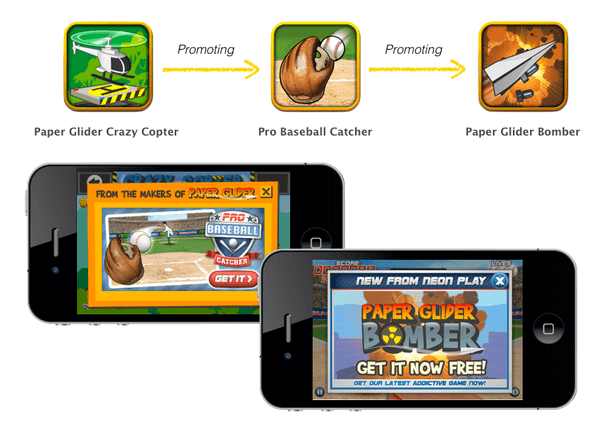
Me-Others Cross Promotions: On the contrary, Me-Others cross-promotions is when you collaborate with other parties to multi generate higher mobile app user acquisition rates. That other party could be a competitor, or it could be in a totally different zone.
Example: Cross-promotion campaign was done by Positionly and Brand24, The first is an SEO tool and the second one is a tool for monitoring performance over the web. They collaborate together and came up with the following newsletter.

Tools that can assist you:
Tapdaq: “grow apps’ user acquisition rates by trading installs with other apps or by cross-promoting their own network.”
Tappax: ”increase your app users base by exchanging ads with other developers in our community.”
Appgain.io: “Cross-promote your app with up-to-date deep links, retain the information required to create personalized onboarding, and use special MAT platform for mobile app user acquisition channel tracking.”
6- Web Organic Search (App SEO)
According to Google reports, you have 27% of your total app users who discovered your app through search engines. Accordingly, knowing that the acquiring process is likely to be done away from the app store, your mobile app marketing strategy should pay special attention to an organic web search.
Nowadays it’s no more about how strong your ASO mobile app user acquisition strategy is, it’s more into your SEO strategy as well. SEO tips are somehow similar to ASO ones. So, besides taking care of the keywords, app title, description, and so on, there are some extra tips and tools for organic web search.

The Dos:
Use High-quality back-links: High-quality back-links are your own affiliate marketers. It’s when you use a link that talks about your app, whether it is your app landing page or your app download page. They are a must when it comes to SEO mobile app marketing. If you need to boost your mobile user acquisition rates through a google search engine using back-links, all that you have to do is to add a URL to your app download page and go spread this URL throughout the web! Here are some tips concerning that:
- Influence other websites to talk about your app. Make sure that they are all using that same URL
- Cross-promote your download URL, or you can add it to your own app website header.
- Bear in mind that the more qualified and trusted links used for a given URL, the more ranks this URL will get and accordingly and the better positioning it will have.
- Make sure that your app deep linking is friendly regarding both iOS and android systems.
- Build an SEO friendly website for your app; this link will guide you through this: https://www.wikihow.com/Design-a-Website-for-SEO
- You will also need to study more about app indexing: https://searchengineland.com/library/mobile-marketing/app-indexing-deep-links
The Don’ts:
ASO and SEO are not that similar: yes ASO and SEO guidelines are somehow similar, but not all the way long!
For instance, when users search on an app store, they tend to search with very short inquiries such as app category or name. But when it comes to a search engine, users use longer phrases, such as questions or conversational inquiries or even use voice search through Apple Siri or others. So when it comes to choosing keywords to get discovered you need to be aware that app store users search behavior is different from that of the search engine.
SEO Tools that can assist you:
Moz: “Improve Search Rankings. Drive Traffic. Get Customers.”
Deepcrawl: “Make your web presence accessible, relevant and effective ”
Ahrefs: “Tools to grow your search traffic, research your competitors and monitor your niche.”
Appgain.io: “Automatically bring your app content to the web world without building a website, compatible with landing pages technologies for app boosting, content feasibility, and App SEO highest ranks.”
And that was our follow-stop for the first pillar of the AARRR model; mobile user acquisition. Now you know where to find your audience, what the channels to acquire them, what is costly and what is less costly, what mobile app marketing strategies to encounter and what not to, and finally a collection of helpful tools that will definitely help you!
Moving to our second pillar; Activation. wait for appgain.io step-by-step mobile app marketing guide to acquire, engage, and retain users – part 2.
Still, got questions? Do not hesitate to reach out and Contact Us! Request Demo now.



